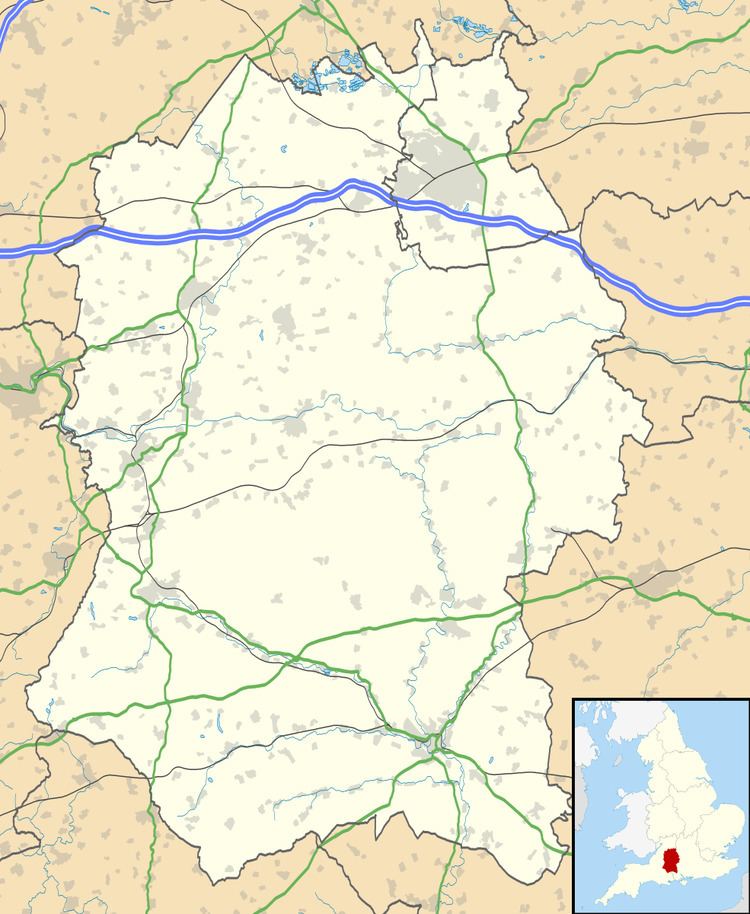OS grid reference ST9367 Postcode district SN15 Local time Friday 10:55 AM Dialling code 01249 | Sovereign state United Kingdom | |
 | ||
Weather 9°C, Wind SE at 23 km/h, 97% Humidity | ||
Bowden Hill is a village in Wiltshire, England, 3.5 miles (6 km) south of Chippenham and 1 mile (2 km) to the east of Lacock. The village consists of about 50 houses, a pub, and a small industrial estate.
Contents
- Map of Bowden Hill Chippenham UK
- Origins of the name
- Location
- Parish church
- Conduit House
- Bowden Park
- Spye Park
- References
Map of Bowden Hill, Chippenham, UK
Origins of the name
Bowden Hill was historically called 'Bowdon Hill' according to early maps. There are a number of theories around why the village got its name. One reason is that the name comes from the old English words 'bow', meaning bow shaped, and 'dun' meaning hill. However, alternative theories suggest the name comes from a corruption of 'bdl' (meaning dwelling) into 'bow' meaning 'hill slope on which are dwellings'. Another theory from 'Wiltshire Collections' by Aubrey and Jackson suggests that the name means 'the winding hill'.
Location
Bowden Hill sits on the side of a hill and rises up from the River Avon, at an elevation of 50m, to its peak at 172m above sea level. The village has views to the south and south-west of the river's flood plain and is surrounded by a mixture of woodlands and agricultural land. Bowden Hill borrows many of its facilities from the nearby village of Lacock and doesn't provide amenities such as a school or post office. The village encompasses the small hamlet of Bewley Common and enjoys a relatively sparse population density due to its designation as a conservation area
Parish church
In 1849 Bowden Park was bought by John Gladstone, brother of the Prime Minister William Ewart Gladstone. In 1856 John Gladstone had the Church of England parish church of Saint Anne built to celebrate the birth of a son in the Gladstone family. The architect was S.B. Gabriel of Bristol who designed the nave and chancel in the Early English Gothic style but gave the northeast tower Norman details and a German Romanesque roof. The parish of Lacock was split and the new parish of Bowden Hill served around 300-400 people, but the two parishes were reunited in 1958. Today services are held at St. Anne's on the first Sunday of each month.
Conduit House
Sitting in the common land in the village is a small building which was used as a supply of water for the nearby Lacock Abbey. Built in the 16th century, this small 3.7m square building still supplies water to the abbey albeit through a modern water pipe. The original conduit house was built in around 1280 when Willian Bluet of Bewley Court granted Beatrice, Abbess of Lacock, the right to operate a watercourse on his land to serve the nunnery. This original building was replaced by the owner of the abbey, William Sharington, after its dissolution. The new building is built of limestone and has a steep roof, reaching 4.64m high, constructed of interlocking stone slabs.
Bowden Park
One of largest landmarks in Bowden Hill is the Bowden Park estate which has an 18th-century building designed by James Wyatt. Bowden Park is shrouded by the slope of the hill as well as much of the surrounding woodland. The home was the seat of the former chairman of the General Electric Company, Arnold Weinstock. His closure of the nearby Melksham GEC factory caused local workers to climb the hill and protest outside the property.
Spye Park
Spye Park is on the edge of Bowden Hill and is not strictly part of the village. Although the main part of Spye Park belongs to the village of Bromham, Bowden Park houses the entrance to the park. The village contains the sixteenth century gatehouse to the park.
